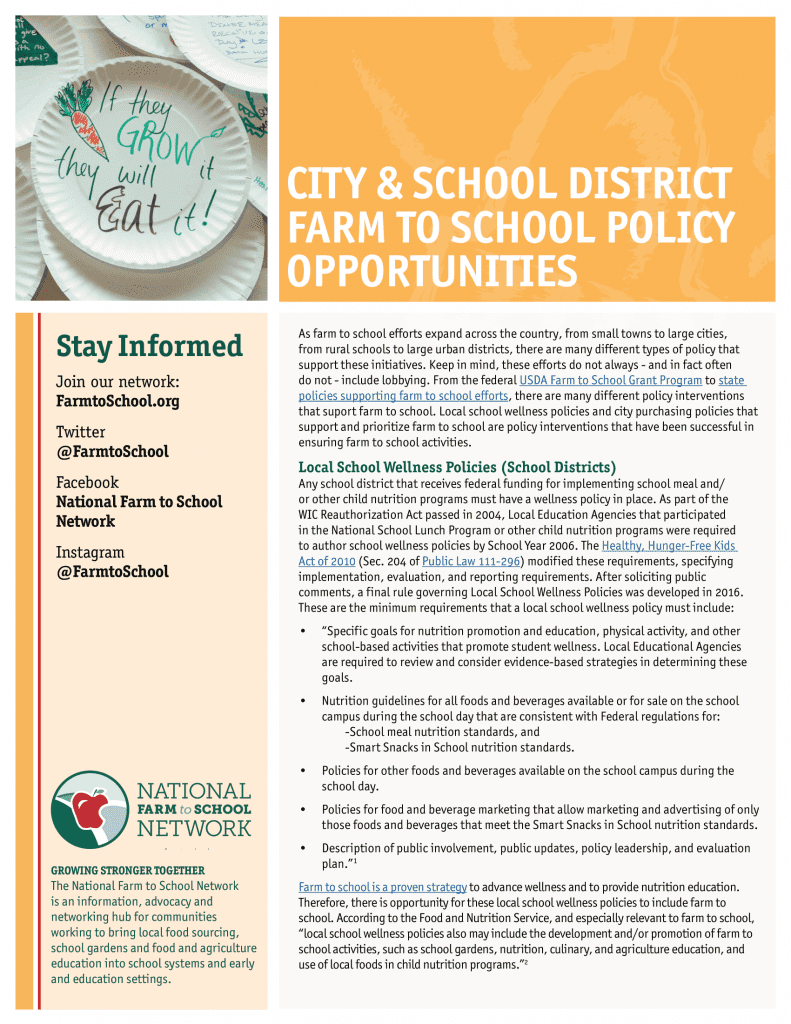School Policy
School Policy
There are many different ways to focus on farm to school at a policy level in schools, school districts, child care centers, and alternative learning environments. Every location is unique, and the following examples of school policy from the National Farm to School Network highlight different ways to implement farm to school on a policy level.
Wellness Policies: The 2004 Child Nutrition Reauthorization required all school districts receiving federal funds for school meal programs to adopt a local school wellness policy. These policies address both nutrition and physical activity. School wellness policies are an opportunity to encourage farm to school activities such as school gardens, farm tours, and local procurement.
Procurement Policies: Schools have significant purchasing power and can encourage the production of and access to healthy, farm fresh foods in their region and communities. Schools can include language around geographic preference in their procurement bid documents.
Fundraising Policies: School or district level policy can guide practices related to healthy fundraising. For example, many schools across the country have eliminated sugar-sweetened soft drinks from campuses through policy change. Smart, healthy policies can support a wide variety of farm to school fundraising endeavors such as allowing a farm-stand on the school campus or creating criteria for products included in fundraising efforts.

